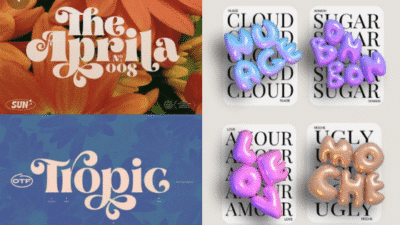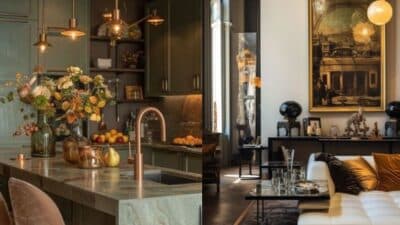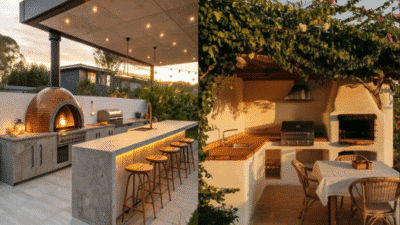A well-designed beauty website is essential for showcasing products and services in a way that attracts and engages your target audience. Great beauty website design makes your brand memorable, encourages trust, and directly supports your business goals. Customers expect visually appealing layouts, user-friendly navigation, and a clear presentation of what your brand offers.
Your website should not only look professional but also make it effortless for visitors to find information and complete actions, like making a purchase or booking an appointment. Effective use of images, color palettes, and straightforward copy helps present your brand at its best and keeps users interested.
Key Takeaways
- Strong beauty website design builds credibility and attracts users.
- Purposeful design elements help guide visitors and increase engagement.
- Integrated content and easy navigation support both marketing and business needs.
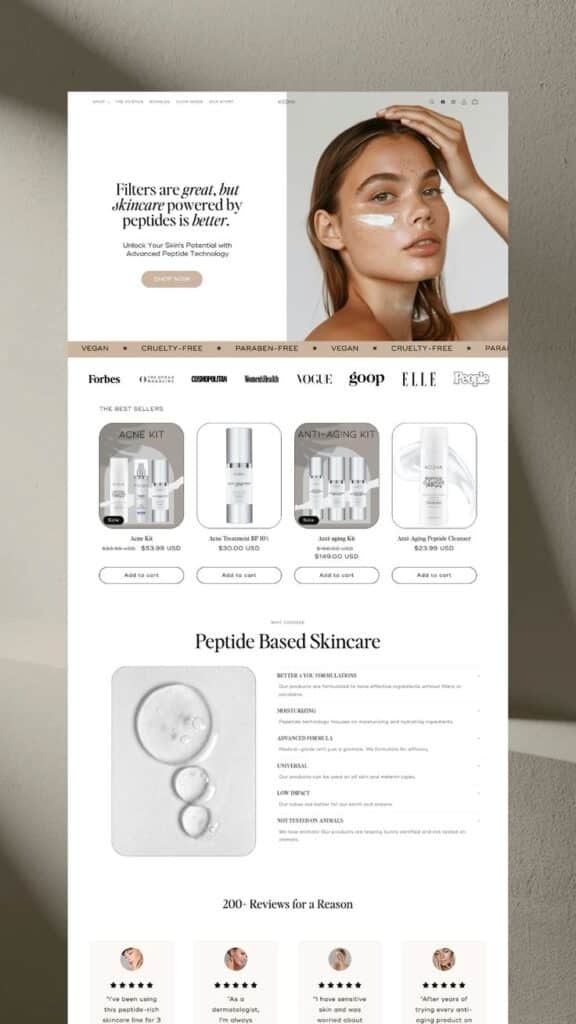
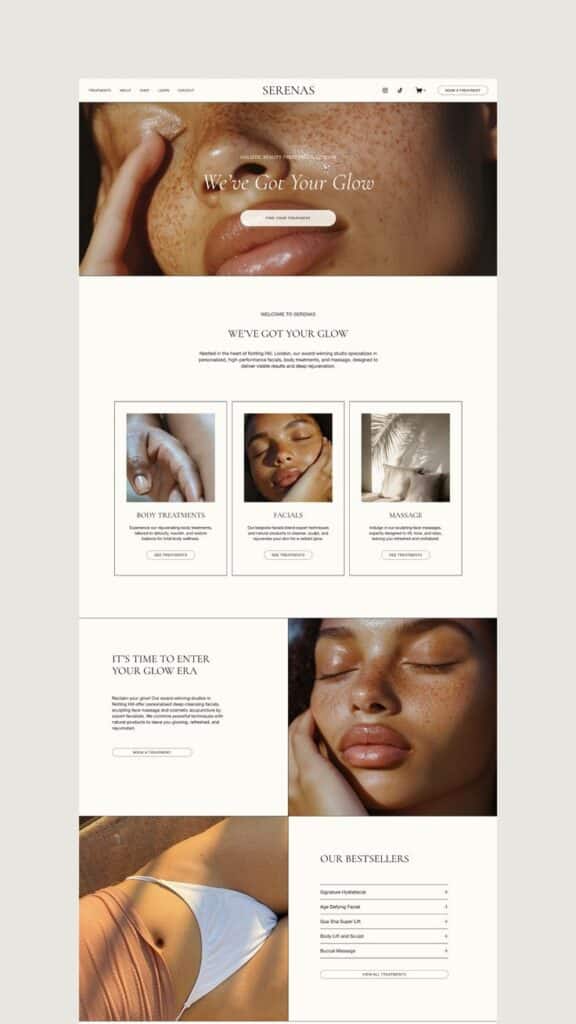
Core Principles of Beauty Website Design
Effective beauty website design is shaped by industry insights, strong branding, and a seamless user journey. Focusing on these areas strengthens your online presence and makes your website more attractive to potential clients.
Understanding the Beauty Industry
To design a successful beauty website, you need a clear understanding of the industry’s visual trends and customer expectations. The beauty sector values clean aesthetics, compelling product imagery, and modern layouts that mirror what customers see in stores and on social media.
Current trends include:
- Minimalist product displays
- High-resolution visuals
- Clear calls-to-action
Paying attention to competitors and industry leaders can help you recognize what appeals to your target audience. Staying updated on evolving trends—like eco-conscious branding or inclusive imagery—ensures that your website remains relevant.
A deep industry understanding enables you to select design elements and content that resonate with beauty consumers. This leads to increased engagement and a more effective website.
Establishing a Clear Brand Identity
A strong brand identity is essential for building trust and recognition. Your website should prominently feature your logo, color palette, and consistent typography to reinforce your brand’s character.
Use brand voice and visual style to differentiate yourself from competitors. Incorporate unique elements—such as signature colors, custom graphics, or branded icons—to make your site memorable.
Your brand identity should be apparent from the homepage to the checkout process. This continuity helps you attract and retain new clients, as visitors gain confidence in your professionalism and attention to detail.
User-Friendly Interface and Navigation
A user-friendly interface ensures visitors can find what they need quickly and easily. Intuitive navigation, clear menus, and well-labeled sections prevent confusion and increase the likelihood that users will stay on your site.
Key elements include:
- Simple, logical menu structures
- Prominent search bars
- Clear links to product categories and contact information
Fast-loading pages, mobile responsiveness, and legible text further improve the browsing experience. Consistently easy navigation turns first-time visitors into returning clients and enhances your reputation in the beauty industry.
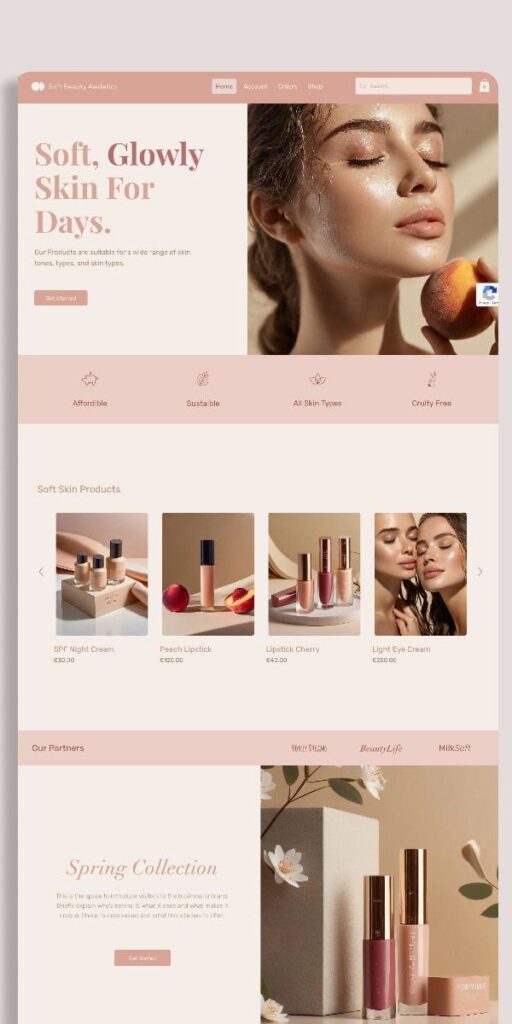
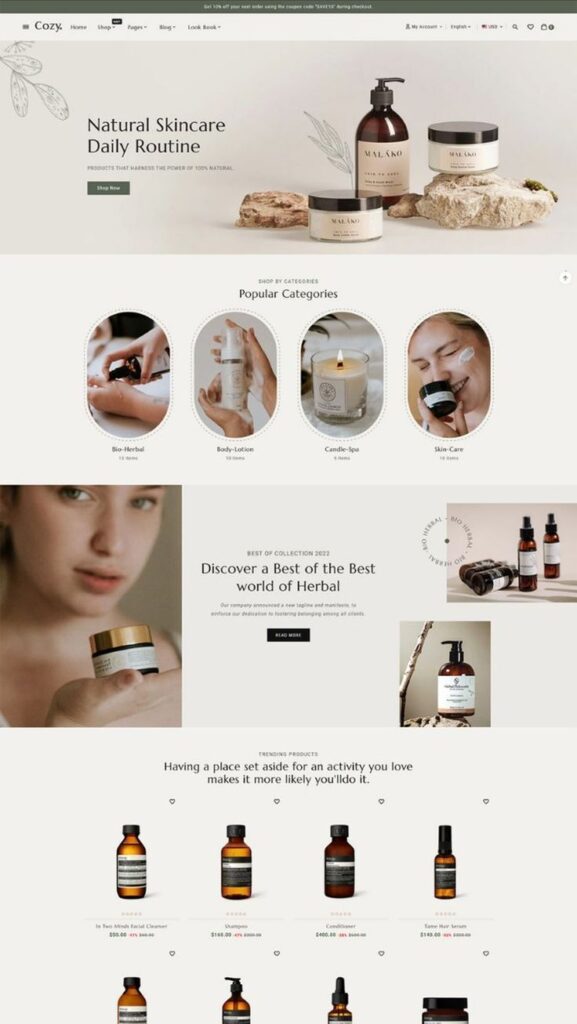
Design Elements for Impactful Beauty Websites
Effective beauty websites balance appealing visuals and functional design choices. Selecting the right colors, imagery, and layouts can shape the user’s experience and drive engagement with your brand.
Color, Typography, and Imagery
Color sets the mood for your site and signals your brand’s personality. In beauty website design, soft pastels or bold accents are often used to reflect product categories or brand identity. Avoid using too many contrasting colors, as this can overwhelm visitors.
Typography should offer clarity and reinforce your style. Pair clean, readable fonts for body text with distinctive headings to highlight key messages. Many beauty brands use subtle serif or sans-serif typefaces to maintain a modern, elegant look.
Imagery is critical. Use high-quality product shots and clean background photography to attract attention. Ensure that your images load quickly and adapt to all screen sizes. Well-lit, close-up product images enhance credibility and help drive conversions.
Hero Section and Call-to-Actions
The hero section is the first thing your visitors see. A striking hero image, paired with concise copy, draws users in immediately. Use clear space to focus attention on the main message and avoid clutter.
Effective calls-to-action (CTAs) should be prominent, easy to spot, and aligned with your goals. Use contrasting button colors and brief, direct language, such as “Shop Now” or “Try Today.” Consider placing a secondary CTA for visitors not ready to buy, like “Learn More.”
Your hero section’s performance can set the tone for the entire site. Interactive elements, such as sliders or product previews, can boost engagement if they load quickly and don’t distract from your primary CTA.
Creative Layouts and Mega Menus
A creative layout differentiates your site from generic templates. Staggered product blocks, split screens, or parallax scrolling add visual interest without sacrificing usability. Simplicity in navigation should guide your design choices, ensuring users can browse easily.
Mega menus are valuable for beauty sites with extensive product ranges. They organize categories and featured collections in a single, easy-to-navigate drop-down. Highlighting best-sellers or new arrivals in the mega menu can improve product discovery.
For smaller catalogs or one page sites, stick to streamlined navigation and spotlight key sections directly on the homepage. Always test your layouts to confirm they work smoothly on both desktop and mobile devices.
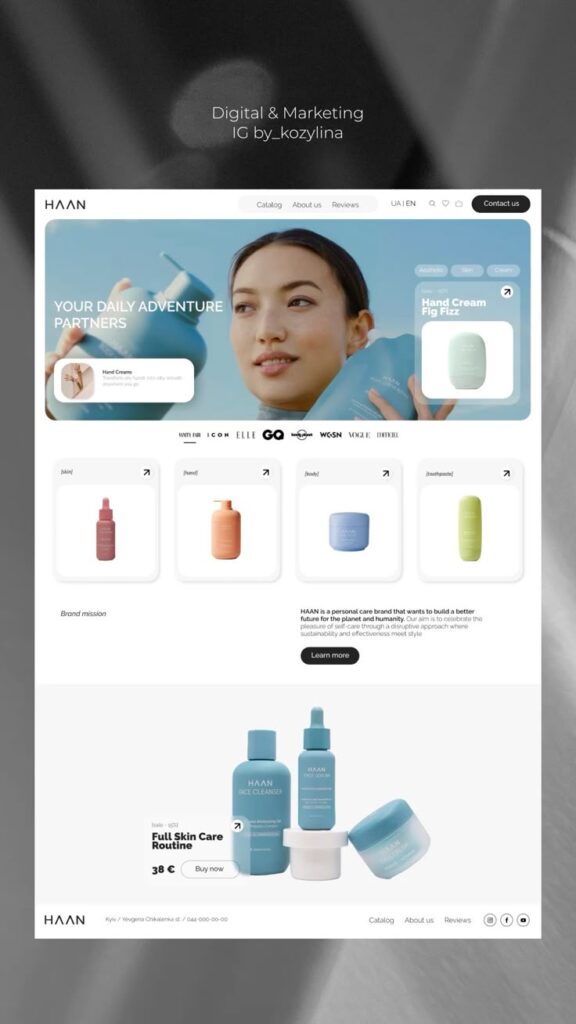
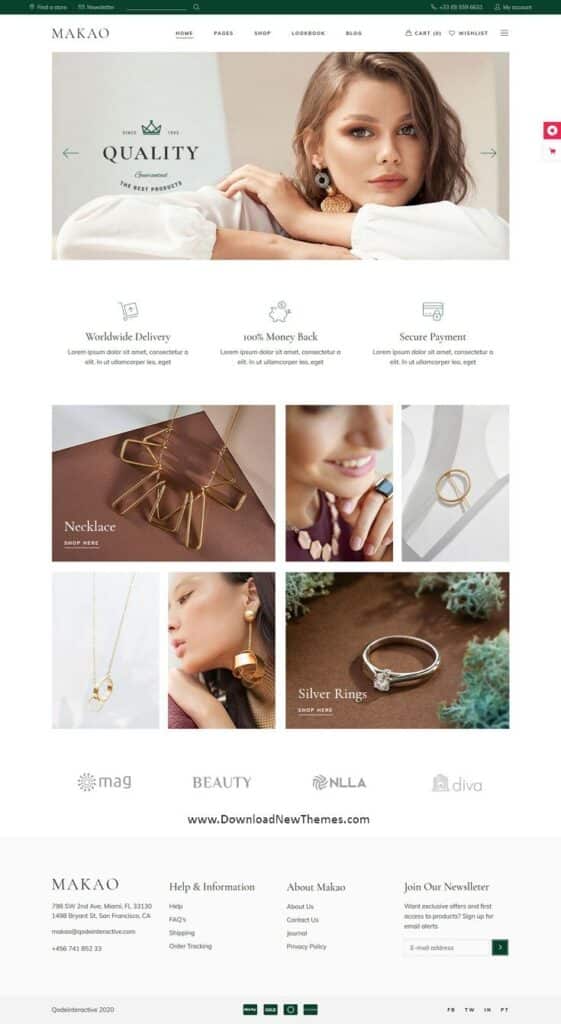
Content Strategy and Marketing Integration
Organic content and marketing integration help you connect with target audiences, build trust, and drive engagement on your beauty website. A strong content strategy highlights your value, encourages conversions, and establishes authority in the beauty industry.
Showcasing Beauty Services and Products
Effective web design for beauty brands involves clear presentation of your beauty services and products. Visual storytelling—via high-quality images, videos, and interactive elements—lets visitors quickly understand what you offer, from makeup services to skincare treatments and hair consultations.
Use product pages with detailed descriptions, ingredients, pricing, and before-and-after galleries. Include easy navigation, comparison tables for cosmetic products, and “Book Now” or “Shop” buttons.
Highlight key features or bestsellers with callout banners and seasonal offers. Integrate Instagram or TikTok feeds to display real-time content and demonstrate products in action, providing immediate, engaging proof of what your services can achieve.
Blogging and Editorial Features
A beauty blog brings fresh, informative content to your audience on a regular basis. Blogging positions your site as an expert resource for makeup tips, product reviews, hair care routines, and skincare trends. Well-researched editorial pieces drive organic traffic and encourage sharing on social platforms.
Create category pages for topics like skincare, hair, and makeup to help users find content by interest. Listicles, expert Q&As, and how-to guides offer practical value for every visitor. Guest posts or collaborations with industry professionals add credibility.
Timely topics—like seasonal beauty routines or new product launches—keep your content relevant. Use internal links to direct readers to related products or services, helping convert content readers into customers.
Customer Reviews and Testimonials
Sharing genuine customer reviews and testimonials increases trust and social proof for your beauty website. Dedicated testimonial sections using real photos, ratings, and honest feedback can positively influence buying decisions, especially for new visitors.
Feature a mix of written reviews, video testimonials, and star ratings for both individual beauty services and cosmetic products. Organize reviews with filters (e.g., “most helpful,” “recent,” or by product category) to help users sort through feedback efficiently.
Highlight specific benefits mentioned by clients, such as improved results from a skincare treatment or satisfaction with a makeup product’s quality. Encourage new reviews by following up with customers post-service or post-purchase, making the submission process simple with easy-to-use web forms.
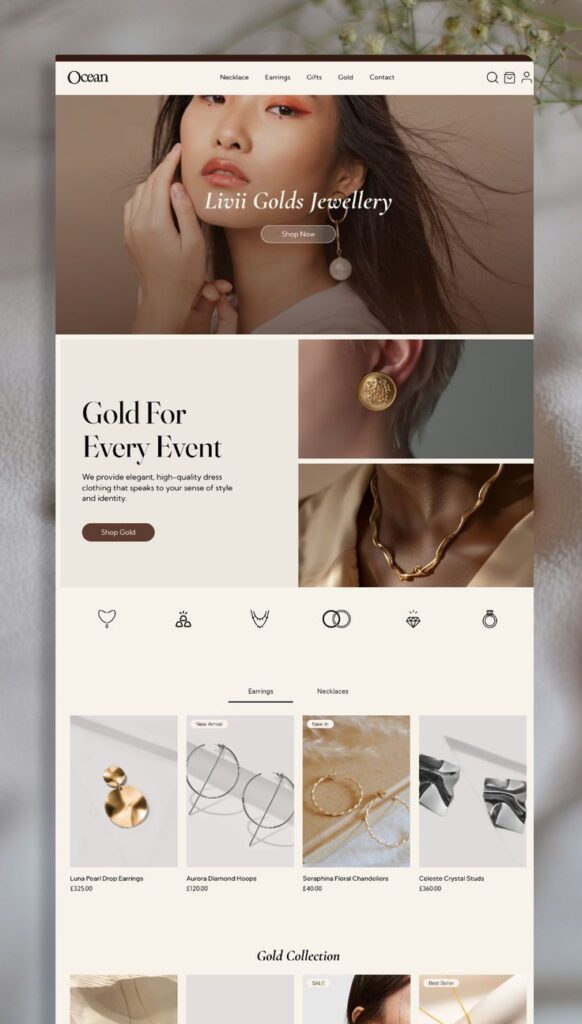
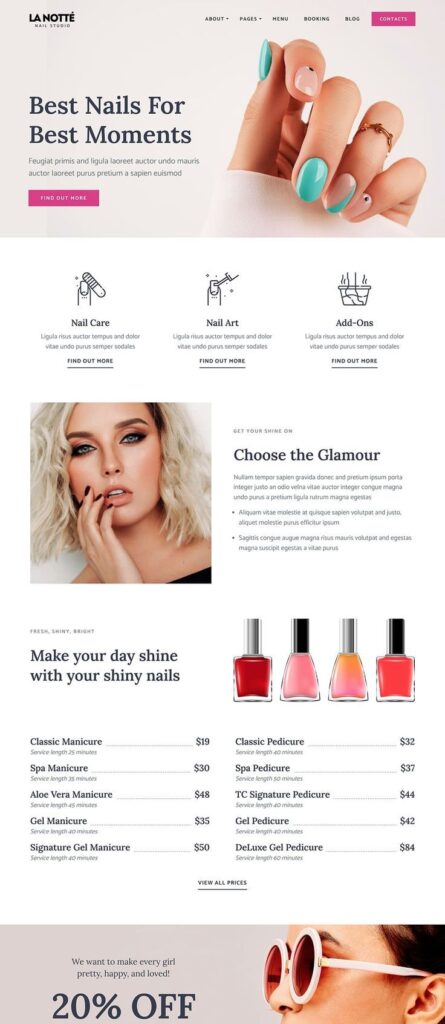
Ecommerce and Business Functionality
To succeed in the beauty industry online, you need practical tools that support store growth and a seamless shopping experience. Your platform should combine eye-catching design with strong commerce functions, tailored for the unique needs of beauty brands.
Building an Online Shop for Beauty Brands
Choosing the right ecommerce website template simplifies setup and helps you maintain a consistent, attractive brand image. Platforms like Shopify, WooCommerce, and Ecwid offer templates made for beauty brands and support must-have features, such as product galleries and reviews.
You should highlight product details with clear ingredient lists, showcase cruelty-free labels or vegan options, and support high-quality images. Consider using templates inspired by successful stores like Kylie Cosmetics and Sephora which focus on a premium shopping experience.
Adding custom pages for skincare guides, shade finders, or routine builders can improve user engagement. Make navigation easy, so shoppers can explore everything from collections to best sellers.
Optimizing Ecommerce Website Features
Critical ecommerce features for beauty websites include secure checkout, fast page load times, and mobile optimization. Use filters to help customers sort by preferences, such as “cruelty-free” or “organic,” and support easy product comparison.
Integrate wishlist functions, customer reviews, and automated promotions like free shipping thresholds. Offer clear shipping and return policies, which gives customers confidence to purchase.
A robust content management system (CMS) will help you quickly update seasonal collections or launch limited editions. Look for built-in SEO options to ensure your products appear in relevant searches. Prioritize user experience by streamlining checkout to reduce abandoned carts.
Sales and Collections Management
Effective sales and collections management are key to boosting revenue in a beauty store. Organize your products by type, routine, or collection—such as “Summer Essentials” or “Cruelty-Free Bestsellers”—to make browsing intuitive.
Use tools that let you create time-sensitive offers or limited-edition bundles and highlight them on the home page. Automated systems help manage inventory, order tracking, and customer service inquiries, saving you time.
Consider integrating detailed analytics. Track customer preferences, sales trends, and retention rates to optimize your online shop. This info guides you on what collections to feature next and how to refine ongoing promotions.

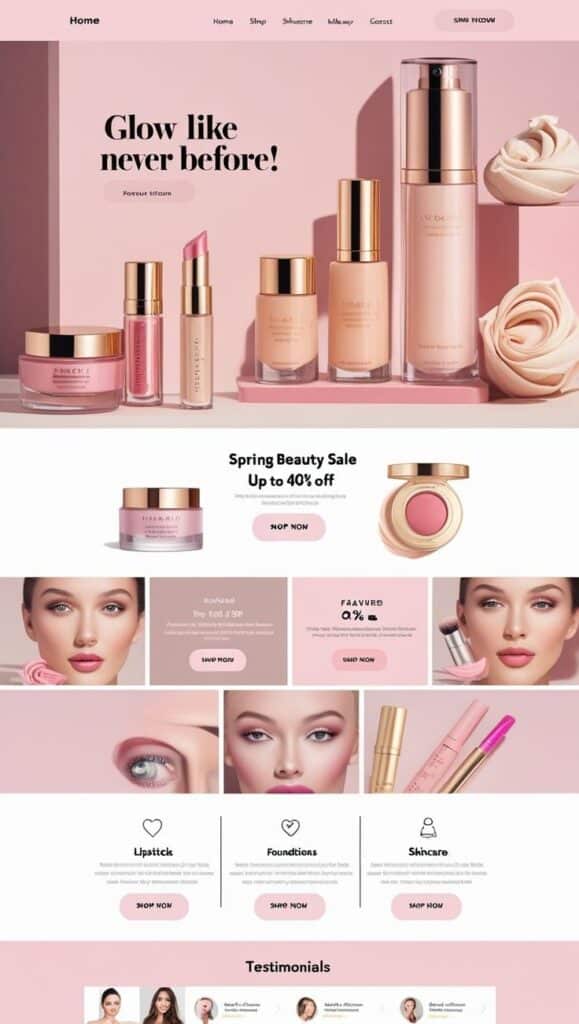
Best Practices and Real-World Inspiration
Effective beauty website design requires a balance of strong visuals, user experience, and modern functionality. Key priorities include building trust, presenting services and portfolios clearly, and keeping up with industry trends.
Case Studies: Top Beauty Salon Websites
Successful beauty salon websites combine user-friendly navigation with a striking visual presence. For example, modern hairdressers and spas often feature high-quality product imagery and real-time appointment booking tools. Sites like these use concise menus, homepage highlights for key services, and display customer reviews prominently.
A well-designed salon website keeps essential contact details and location maps at the top or bottom of each page. Many top platforms integrate social proof—like awards and client testimonials—to build trust. Using a responsive WordPress theme ensures your website works on any device, helping attract both new and returning clients.
Consider presenting key services in a simple table:
| Service | Booking Option | Example Feature |
|---|---|---|
| Hair Styling | Online | Instagram Gallery |
| Facial Treatments | Phone/Online | Before/After Photos |
| Massage Therapy | Online | Real-Time Scheduler |
Integrating Portfolio and Photography
High-quality photography is essential for beauty salons and wellness businesses. Portfolios should showcase your best work, whether it’s intricate hairstyles, makeup, or spa results. Use large, crisp images with minimal distractions around them to let your work speak for itself.
Create a dedicated gallery page with categories such as hair, makeup, or skincare treatments. Regularly update these with seasonal or trending styles. Add interactive elements, such as image sliders or before-and-after comparisons, to make browsing more engaging for potential clients.
Including client consented photos and written testimonials gives visitors confidence in your expertise. Some of the most popular beauty salon websites integrate their Instagram feeds directly on the homepage, supporting both credibility and inspiration.
Adapting Current Trends and Fashion
Beauty website design is influenced heavily by ongoing trends in the industry. Color palettes often reflect current fashion trends—soft pastels, monochromes, or accents inspired by runway styles. Animation effects and subtle transitions are being used to create a polished, modern look without overwhelming visitors.
Easy navigation, search functions, and smooth e-commerce integration remain in demand for both salons and spas. Highlighting seasonal promotions or limited-time products can help boost engagement. Many beauticians adapt features like virtual try-on tools, online consultations, and real-time chat to create a seamless wellness experience.
If you operate a WordPress site, select themes that are updated frequently to incorporate the latest design standards and functionalities expected by today’s users. This keeps your beauty website at the forefront of both style and usability.
- 1.5Kshares
- Facebook0
- Pinterest1.5K
- Twitter0

